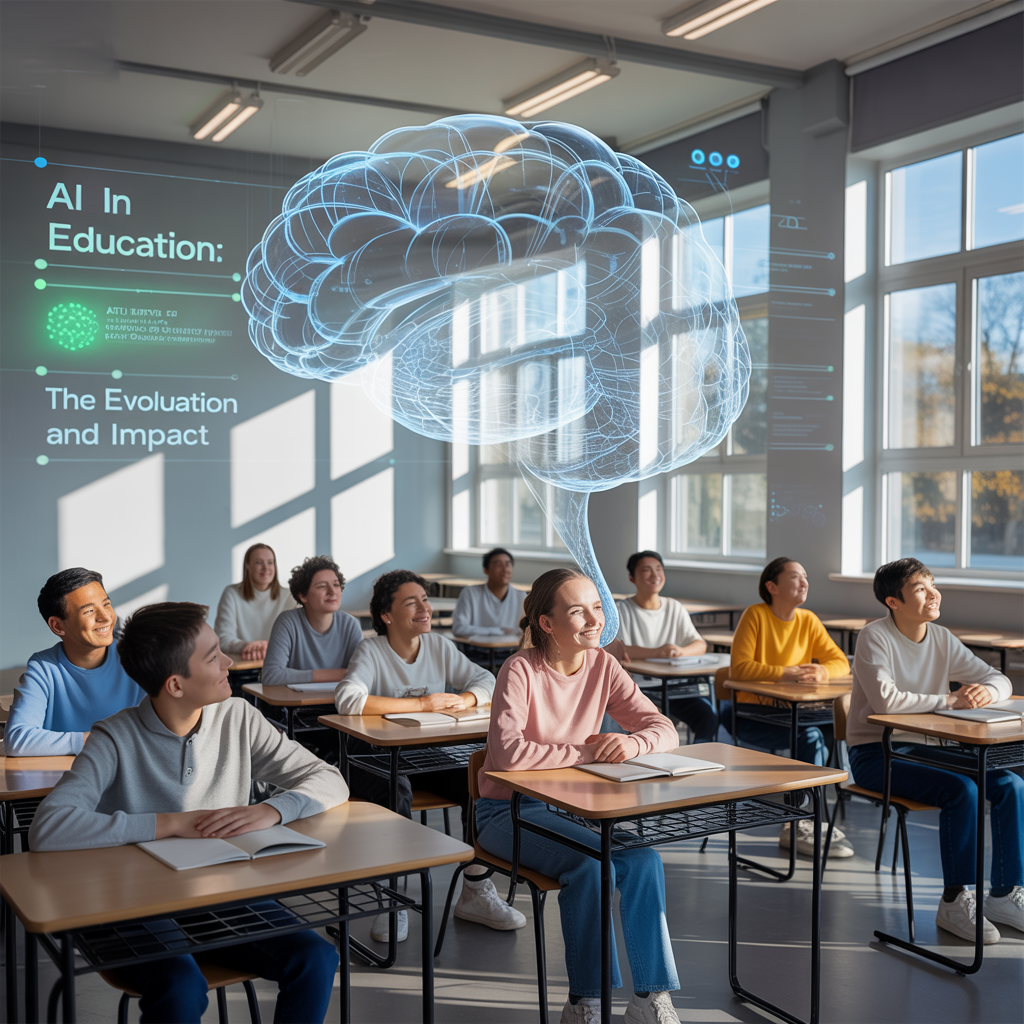The New Era of Personalized Learning
By Gudstory Org AI News (May 26, 2025)
Thank you for reading this post, don't forget to subscribe!Artificial Intelligence (AI) is transforming the educational landscape by delivering hyper-personalized, data-driven learning experiences. At the forefront of this revolution are Intelligent Tutoring Systems (ITS) — advanced AI-driven platforms that simulate the guidance of a human tutor, optimize AI in Education and learning paths, and elevate student engagement and success.
What Are Intelligent Tutoring Systems?
Intelligent Tutoring Systems (ITS) are computer-based tools that help students learn by giving customized lessons and quick feedback, all without a human teacher. Unlike traditional e-learning platforms, ITS analyze individual learner behavior and performance to dynamically tailor content, identify knowledge gaps, and provide targeted remediation.
Core Components of ITS
-
Domain Model – Encodes subject matter knowledge.
-
Student Model – Tracks learner progress, misconceptions, and preferences.
-
Tutoring Model – Determines teaching strategies and interventions.
-
User Interface – Ensures seamless communication between learner and system.
The Rise of Adaptive Learning Technologies
AI-powered tutoring systems are pivotal to adaptive learning, a methodology that dynamically adjusts instructional material to suit the learner’s needs. This advancement is especially effective in large-scale online learning environments, where human attention is limited.
Key Features Enabling Adaptive Learning
-
Predictive analytics to foresee student drop-off or confusion points.
-
Real-time performance tracking and formative assessments.
-
Natural language processing for intelligent conversational feedback.
-
Gamification to sustain student motivation and cognitive engagement.
Benefits of Intelligent Tutoring Systems in Modern Classrooms
1. Personalized Learning Paths
ITS diagnose a student’s unique strengths and weaknesses and curate a personalized curriculum. This allows students to learn at their own pace while receiving focused guidance on areas needing improvement.
2. Scalable High-Quality Tutoring
Unlike human tutors, ITS can scale effortlessly to support thousands of students simultaneously without compromising on quality, ensuring education equity across demographics.
3. Immediate Feedback and Remediation
Instantaneous feedback corrects errors as they occur, allowing learners to internalize concepts more efficiently. ITS can deliver hints, explanations, and alternative approaches in real-time.
4. Enhanced Teacher Support
ITS act as virtual co-teachers, freeing educators to focus on higher-order pedagogical tasks such as mentoring, content customization, and emotional support.
Real-World Applications and Success Stories
Carnegie Learning
Carnegie Learning’s MATHia software uses ITS to teach math via step-by-step instruction and adaptive feedback. Studies show that students using MATHia perform better on standardized assessments than those receiving traditional instruction.
Squirrel AI Learning (China)
Squirrel AI combines ITS with deep learning algorithms to deliver K-12 personalized tutoring. Their system identifies micro-concepts a student struggles with and retargets instruction accordingly.
ASSISTments (Worcester Polytechnic Institute)
This ITS integrates seamlessly with existing curriculum and provides real-time feedback to both students and teachers, improving homework efficacy and in-class performance.
Challenges and Ethical Considerations
Despite their benefits, ITS raise certain concerns:
-
Data privacy – Collection of granular student data must adhere to FERPA, GDPR, and other privacy regulations.
-
Bias in algorithms – It is important to make sure they are fair and do not treat anyone unfairly.
-
Overdependence on automation – Balance between AI assistance and human pedagogy is essential.
Future of ITS: Trends to Watch
Integration with Virtual and Augmented Reality
Immersive learning via VR/AR-based ITS will enable experiential education, particularly in science, engineering, and medical fields.
Multimodal Learning Analysis
Advanced ITS will combine eye-tracking, facial recognition, and speech analysis to assess emotional and cognitive states, tailoring interventions accordingly.
Explainable AI in Education
As ITS become decision-makers, the need for transparent, interpretable AI is crucial. Explainable AI models will help educators trust and audit recommendations made by tutoring systems.
Comparison: ITS vs Traditional Teaching Methods
| Feature | Intelligent Tutoring Systems | Traditional Teaching |
|---|---|---|
| Personalization | High | Limited |
| Scalability | Massive | Low |
| Real-time Feedback | Instant | Delayed |
| Cost of Delivery | Low (at scale) | High |
| Emotional Support | Low | High |
| Adaptivity | Dynamic | Static |
Conclusion: A Paradigm Shift in Learning
Intelligent Tutoring Systems represent a monumental shift in education, bridging gaps between personalization, accessibility, and scalability. As the technology matures, ITS will become indispensable in classrooms and digital learning platforms alike, paving the way for equitable, data-driven education that empowers every learner to succeed.


